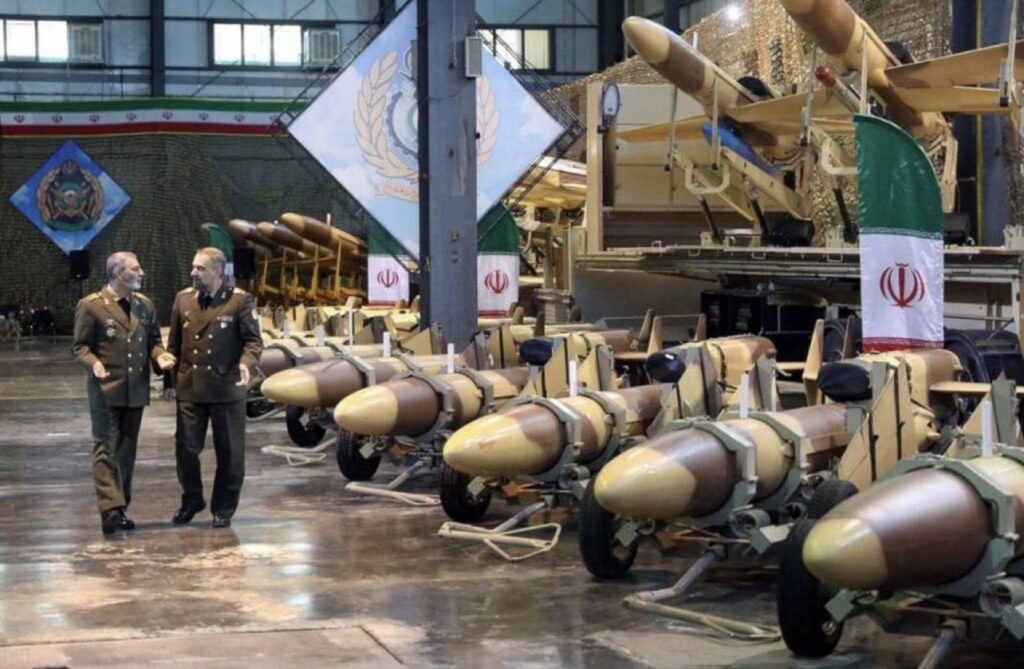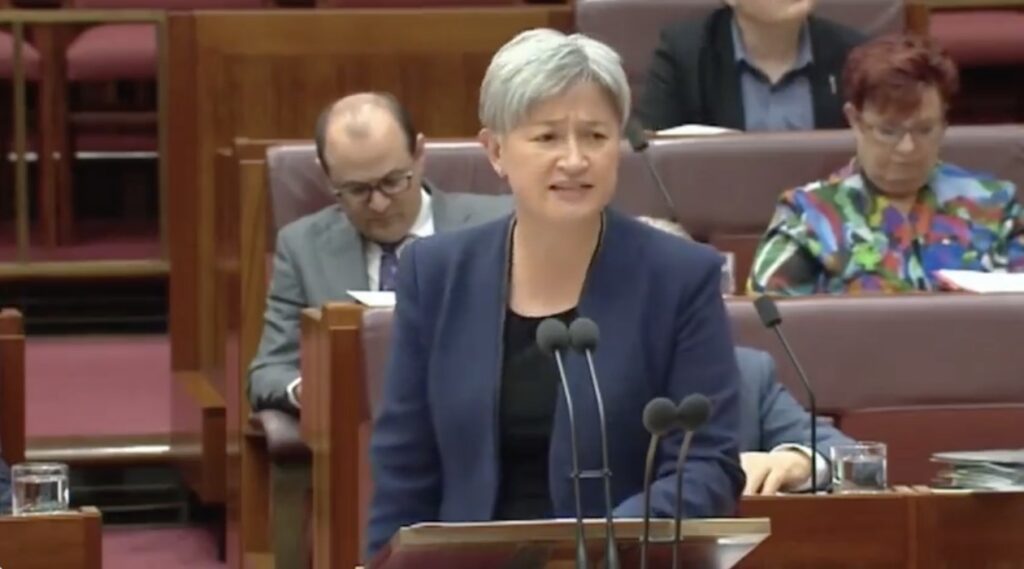UPDATES
Unrest in the PA and the Arab Spring
Sep 12, 2012

Update from AIJAC
September 12, 2012
Number 09/12 #02
This Update features material on the growing demonstrations – sometimes violent – in the West Bank against both cost of living pressures and against the Palestinian Authority (PA) more generally. (A report on the demonstrations yesterday, which left 50 injured is here. PA PM Salam Fayyad response in withdrawing unpopular austerity measures is discussed here.)
The first entry, from the Times of Israel, canvasses the implications of what is going on from both Palestinian and Israeli experts. They warn that the protest movement is potentially a big deal, and may lead to a large scale intifada, or even the overthrow of the PA. One expert also warns that the only conceivable alternative to the Palestinian Authority is Hamas. For some more detailed views of experts including Nashat Aqtash of Bir Zeit University and Hillel Frisch of Bar Ilan University, CLICK HERE. Plus, more on why the West Bank economic boom now looks like it may be heading for a hard landing.
Next up are American academics Alexander Joffe and Asaf Romirowsky, who attempt to place the latest Palestinian unrest in the context of the wider Arab Spring movement, which they clearly draw from. In particular, they ask why something like that Arab Spring had not sprung up earlier in Palestinian circles – and conclude that there is a basic contradiction at work in the PA between the ideological need to steadfastly oppose Israel and the physical need to maintain international aid flows, which has led to the focus on the unhelpful effort to seek unilateral UN recognition. They argue, however, that the current situation looks unsustainable for the PA, especially as the neighbouring Arab world takes a more Islamist bent, yet also note that the Palestinians have the most to lose from any major changes in the current status quo. For this important analysis of the dynamics apparently driving the PA leadership, CLICK HERE. Meanwhile, in a related comment, Elliot Abrams argues that reported PA plans to go back to the UN to unilaterally seek recognition of statehood is bad for Palestinians.
Finally, Palestinian affairs expert Jonathan Schanzer has a look at the growing courtship between Hamas, rulers of Gaza, and the Egyptian Government dominated by the Muslim Brotherhood, Hamas’ parent movement. He cites evidence that not only is a deal being sought between the two for a complete opening of the Gaza-Sinai border, but that a declaration that Gaza is liberated, as well as a complete cut-off of all contacts across the border with Israel is also being discussed. While he notes that such an agreement stills seem distant, Schanzer looks at the implications of such a new arrangement, for both Israel and the PA. For all the details of Schanzer’s analysis, CLICK HERE.
Readers may also be interested in:
- Academic Robert Rabil has another good look at how the Arab uprisings are adversely affecting Israel’s regional strategic outlook.
- Setting the record straight on Israel’s legal obligations via those Eritrean asylum seeker who arrived at the Sinai border. Plus a Jerusalem Post editorial on this dilemma for Israel.
- The New Yorker (subscribers only story here, news report on key findings here) reports some new details about Israel’s decision to bomb a Syrian nuclear project in 2007, including a previously unknown raid on the Vienna home of the head of the Syrian Atomic Energy Commission to gather evidence.
- A report on the increasing antisemitism featuring in Venezuela’s electoral campaign.
- Some examples from the many stories and comments now appearing at AIJAC’s daily “Fresh AIR” blog:
- Sharyn Mittelman answers prominent Palestinian commentator Hanan Ashrawi’s effort to deny that there were any Jewish Middle Eastern refugees with some information about the fate of Middle Eastern Jewish communities.
- Aharon Shapiro probes some muddy claims being repeated in the Australian media about the Israeli firm Ahava cosmetics, a major target of the BDS campaign.
- Daniel Meyerowitz-Katz notes some revealing comments about Gaza and Palestinian refugees from a head of UNRWA, the UN’s problematic agency for Palestinian refugees.
- Or Avi-Guy summarises the international reaction to Canada’s decision to cut diplomatic ties with Iran.
PA demonstrations could spiral out of control, experts warn
A collapse of the PA, a third Intifada, and a Hamas takeover are just some of the contingencies
By Elhanan Miller
Times of Israel, September 12, 2012
Palestinian Authority Prime Minister Salaam Fayyad attempted to contain mounting domestic pressure in the West Bank on Tuesday by announcing a series of limited austerity measures. But the public protests across the West Bank that turned violent on Monday are no longer directed at Fayyad alone and may have already spun out of control, Palestinian observers say.
“The people demand an end to Oslo,” hundreds of demonstrators in Ramallah shouted Tuesday afternoon, some holding signs reading, “No to the agreements of shame” — a reference to the Paris Protocol of 1994, which binds the Palestinian economy to Israel’s and which many Palestinians regard as the source of their economic woes.
In the West Bank city of Tulkarm, a press camera captured another demonstrator’s sign that read, “The price hike is the final nail in the government’s coffin.”
In Nablus, protesters on Saturday shouted “Get out, Abbas” and “We don’t trust you, President, may God curse you.”
“I fear this may be the start of something big, even a third Intifada,” Nashat Aqtash, a communications professor at Bir Zeit University in Ramallah, told The Times of Israel. “Fayyad’s announcements are too little, too late.”
On Monday, demonstrations turned violent in Nablus, as hundreds of young men pummeled police with stones; the police retaliated by firing in the air. In Hebron, demonstrators stormed a police station; in return, they were hit with tear gas. They then tossed shoes — an act of humiliation — at a poster of Fayyad. Nine policemen were reported injured across the West Bank.
Criticism of Fayyad’s economic concessions were almost unanimous on Tuesday, with members of Fatah — the party of PA President Mahmoud Abbas — dubbing them “insufficient.”
“The measures are important and help ease the burden on Palestinian citizens, but we need more such measures,” Ahmad Assaf, a spokesman for Fatah, told The Times of Israel, adding that his party did not discuss the removal of the Palestinian prime minister and finance minister, who is politically unaffiliated. “Fayyad is not responsible for the global rise in commodity prices,” Assaf said.
“The ultimate solution is removing the occupation,” Assaf said. “It controls the land crossings, the ports, and our natural resources. There can be no economic independence without political independence.”
Aqtash of Bir Zeit University said he never thought the West Bank would erupt in such violence before Gaza, which is much poorer and less dependent on external financing.
“We were expecting Gaza to explode in the face of Hamas. Instead, the West Bank has exploded in the face of Fatah,” he said.
But Hillel Frisch, an expert on Palestinian politics at the Begin-Sadat Center for Strategic Studies at Bar Ilan University, said it made perfect sense for West Bank Palestinians to demonstrate now. Public anger usually erupts after years of prosperity followed by a sharp recession, as is the case in the West Bank, he said.
“This is a very dangerous moment for the Palestinian Authority,” he told The Times of Israel. “It would not be dangerous for Hamas, which has the means to repress such protests, but it is for the PA, which is tremendously weak and cannot sustain prolonged violence.”
Israel, for its part, has done its best to help keep the PA afloat. In April, Prime Minister Benjamin Netanyahu and the governor of the Bank of Israel Stanley Fischer appealed to the international Monetary Fund (IMF) on behalf of the PA for a bridge loan of $100 million to prevent it from collapsing. The IMF rejected the request, Israeli daily Haaretz reported.
This week, Netanyahu reportedly turned to the US and the EU requesting urgent financial aid for the PA. Frisch of BESA said that Israel had both security and economic reasons for fearing the collapse of the Palestinian Authority.
“At $3.4 billion a year, the PA is Israel’s second largest export market, and is especially crucial for non-high tech goods,” he said.
Aqtash said that, if the PA falls, the only possible alternative is Hamas. ”Since 2006, I have said that Hamas is on its way to the West Bank.”
Back to Top
————————————————————————
Why Hasn’t There Been Another Palestinian Intifada?
by Alexander Joffe and Asaf Romirowsky
Forbes, September 9, 2012
Is the Arab Spring an ‘intifada’? And why haven’t the Palestinians joined in?
The intifada or ‘throwing off’ was the spontaneous Palestinians grassroots rebellion against Israel that began in the fall of 1987. Much like the beginnings of the Arab Spring in Tunisia, the rebellion spread quickly in the pre-internet days across the Palestinian territories and Gaza and captured the world’s attention. Within a few short years, however, it was usurped by the PLO and Yasir Arafat. As befitting the Internet age, the Arab Spring has now largely been usurped more quickly by Islamists around the Arab world.
For the Palestinians the Arab Spring has produced hard choices. While the star of Arab nationalism has fallen everywhere, among the Palestinians in the West Bank it is still alive, kept on life support by international aid, the Israeli military, and an unquantifiable sense of dread at the prospect of a Hamas takeover. Hamas has been regnant in Gaza since 2007. Repression and immiseration have resulted. The choice for Palestinians in the West Bank is stark and all stakeholders have made the Faustian bargain to retain the repressive and kleptocratic Palestinian Authority over the murderous and theocratic Hamas. An intifada by choice seems unlikely there, but an accidental one cannot be dismissed.
But broader forces are also at work. Outside of Gaza Palestinians are stranded between two of their core cultural beliefs. The first is unending opposition to Israel. ‘Steadfastness’ means rejecting the existence of the Jewish state, and this is manifest at all levels of Palestinian society, from school textbooks to summer camp programs, to TV shows, literature and poetry. Virtually any peaceful interactions with Israelis are scorned as ‘normalization,’ and Israel is vilified by official Palestinian Authority and Hamas media not simply as the existential Other but in classically antisemitic terms as the eternal evil of global Jewry, parasitic and bloodthirsty.
At the same time there is another Palestinian imperative that is both cultural and socio-economic, the absolute necessity to maintain international aid. In per capita terms Palestinians have long been the world’s largest recipients of aid, far outstripped the vastly more impoverished regions of Africa and Asia. The Palestinian sense of entitlement is also absolute; any suggestions of cuts in direct aid or to UNRWA, the UN organization that maintains the third or fourth generation of ‘refugees’ who have been denied or refused to resettle in the Arab world, are met with anger, shock and threats. Intifada threatens aid, as does statehood, at least eventually.
How billions in aid have been spent is something else. Spending on the bloated public sector and the binge of construction and infrastructure projects throughout the West Bank account are obvious for only some of the money. Still, Western donors, interested as ever in buying quiet, have not been too curious about Palestinian corruption that has diverted unknown amounts. Israel, too, has been more interested in the status quo.
Without this aid the Palestinian economy could not have made the impressive gains it has registered under prime minister Salam Fayyad. The quiet that has been purchased benefits all parties including Israel, but is probably unsustainable in an era of European economic collapse and American austerity. Fayyad warns all visitors that peace and quiet requires continued funding. Enough unpaid salaries could itself spark an intifada, against the Palestinian Authority.
Coping with these requirements and maintaining solidarity with Arab and now Islamist uprisings is a delicate affair. Vicious Palestinian incitement keeps the national cause alive by focusing on Israel and the Jews as the sources of all Palestinian misfortune. Loud but desultory moves toward a ‘unilateral declaration of independence’ give the impression to Palestinians that statehood is on the horizon. The purported infrastructure gains impress Western donors, as does the relative quiet, and the cash flow supports the Palestinian economy.
The ‘UDI’ strategy also cleverly positions Palestinians to pursue their long-term goal of eradicating Israel by co-opting additional United Nations institutions. This ‘long march through the institutions’ has the spread the delegitimization and stigmatizing of Israel widely and at a low cost. The failure of UDI efforts rally the cause while the successes undermine Israel, but the speed of change is slow enough to maintain the illusion of peace and all-important Western aid.
These balances, appearing to support larger causes while maintaining dependence on aid, exerting pressure on Israel while remaining dependent on it again Hamas, are not political genius on the part of the Palestinian Authority but a unique confluence of interests. Cashing checks while inflicting damage is the bottom line for the Palestinian Authority and its global support network of intellectuals, lawyers and NGOs. Maintaining quiet while facing the vastly more threatening problem of Iran is the bottom line for Israel. And for Europe and the United States the issue is maintaining quiet while rebuilding the international economy and while the convulsions of the Arab Spring play themselves out. Whether deemed appeasement or containment, the price tag is a few billion dollars annually and a relatively low level of Palestinian terrorism.
In the past week, as UN reports about Palestinian economy were made public, president Mahmoud Abbas has tried to get the jump on Hamas by orchestrating protests against his own prime minister, Fayyad. By loudly proclaiming a “Palestinian Spring” Abbas is again simultaneously demanding aid, staying ahead of his own street, and just behind the larger Arab world.
But in the long-term these contradictions will not be sustainable. Islamist victors emerging from the Arab Spring will eventually demand Palestinian direct action. Even a marginal Palestinian or Islamist group can easily set the region ablaze. The recent Sinai terrorist attack on Israel has produced an angry crackdown by the Egyptian Muslim Brotherhood government and a confrontation with Hamas only the basis of its timing and toll of Egyptians killed. But it has also allowed Egypt to move armor, anti-tank and anti-aircraft weapons into Sinai in contravention of the Camp David Accords. An intifada-like spark could ignite a direct confrontation between Egypt and Israel.
All parties would be losers in such a scenario but none more than the Palestinians. Ironically, the culture that invented intifada now has the most to lose. But it appears unlikely that lesson can be transmitted to the Arab and Muslim worlds.
Alexander Joffe is an archaeologist and historian. He is also a Shillman/Ginsburg Fellow at the Middle East Forum. Asaf Romirowsky is an adjunct scholar at the Middle East Forum and the Foundation for Defense of Democracies.
Back to Top
————————————————————————
Gaza Prepares to Declare Independence (From Palestine)
Jonathan Schanzer
The New Republic “blog”, September 10, 2012
It’s no secret that Hamas, the Palestinian Islamist faction that controls Gaza, has long considered exchanging its underground smuggling tunnels to Egypt for a policy of above-board trade. What has only recently begun to register is that Hamas may be contemplating a bolder political gambit still: Cutting its financial ties to both Israel and the Palestinian Authority government in the West Bank, in preparations for declaring full independence on behalf of Gaza.
Al-Hayat first reported the story on July 22. The London-based Arabic daily noted that Hamas was poised to sever its limited economic ties with Israel, open a free trade zone with Egypt at the Rafah border crossing, and declare itself liberated. Before the story could gain traction, however, senior Hamas leaders Mahmoud al-Zahhar and Salah al-Bardawil quickly disavowed the reports.
But senior Gazan officials quietly acknowledged to me in recent meetings that Hamas, a Muslim Brotherhood splinter group, and President Mohamed Morsi’s new Muslim Brotherhood government in Egypt, are actively discussing this controversial idea. Hamas has approached the question patiently since conquering the Gaza Strip from the Palestinian Authority in 2007. Now, after a half decade of economic hardship resulting from the Gaza embargo, the Hamas government appears to believe that 1.7 million Gazans would welcome the free flow of goods above nearly all else.
The international community may be another story. Hamas is still a designated terrorist group in the United States and elsewhere. In hopes of avoiding sanctions or other roadblocks, unaffiliated businessmen in Gaza are now working to create an independent corporation to manage the Rafah crossing. According to a Gaza entrepreneur who wishes to remain anonymous, it is slated to be called the “Palestine Company for Free Trade Zone Area.”
But even if Hamas can satisfy the concerns of the international community, other Arabs might stand opposed. Egyptians are particularly ambivalent. In April, Palestine Press quoted an Egyptian official who opposed the move because it would “cause great harm to the Palestinian cause.” It was the Egyptians, after all, who had labored to bring about the Hamas-Fatah unity agreement of May 2011. Those who have benefited from the smuggling tunnels will also be unhappy. If the Sinai Bedouin population is cut off from the lucrative black market that brings everything from Iranian rockets to groceries into the Gaza Strip, the recent violence in the Sinai could be only a small sign of things to come.
Egypt is also deeply reluctant to let Israel off the hook. As long as Israel controls Gaza’s borders, airspace and coastal waters, it is seen as the occupying power. If Hamas declares independence and opens a free border with Egypt, one could argue that Israel would no longer be saddled with responsibility for the Gazans, and managing the flow of goods that enter and exit the territory—a task that drains Israel of resources and manpower. “Why would Egypt want to help out Israel in this way?” asked one Egyptian academic.
But for Cairo, there are upsides. For one, the Egyptian Muslim Brotherhood enjoys a long-standing relationship with the Gaza Muslim Brotherhood (Hamas’ antecedent). Integrating Hamas with other Middle Eastern economies through Rafah would unquestionably boost the movement’s legitimacy. Moreover, it would finally ease the hardships Gazans have endured under the Israeli trade embargo.
Perhaps more importantly, by taking Hamas’ tunnel economy and bringing it out into the light of day, the Egyptian government stands to cash in. Through taxes or fees, Rafah could generate new revenues at a time when a moribund economy has officials tightening their belts. Some entrepreneurs are even looking to build businesses in Sinai, just to make it easier to ship their goods to the Gaza border.
But this would be no consolation to the Palestinian Authority. The Ramallah-based government in the West Bank is hardly thrilled at the prospect of a breakaway Hamas republic. PA President Mahmoud Abbas would be identified as the Palestinian leader who allowed Hamas to tear Gaza away from the already diminished territories Palestinians claim for their national project. It is no great secret that the two factions have failed to agree on terms of reconciliation since the Palestinian civil war of 2007, but this could mark the end of an attempt to paper over their differences.
Moreover, as it stands now, both Palestinian governments depend largely on foreign aid and trade with Israel for their economic survival. If Gaza breaks off, the PA would be seen as clinging to the Israeli economy, while Hamas joins the Arab Spring economies. Not exactly the best way to show frustrated West Bankers that their leaders are working for the “liberation of Palestine,” especially amidst the recent unrest over economic conditions.
However, all would not be lost for Abbas and the PA if Gaza were to secede. Hamas has saddled the PA with a number of expenses. The financially strapped PA spends nearly 50 percent of its annual budget on Gaza, even though it no longer controls the territory. Additionally, the PA has continued to pay salaries for some 70,000 PA workers in Gaza, even as Hamas created a new public sector comprised of Hamas loyalists. The PA has kept the funds flowing to maintain its claim on Gaza, while also ensuring that their people don’t go hungry. A breakaway Gaza might allow the PA to wash its hands of this redundant obligation.
Another possible plus is that the PA can disavow Hamas when it resurrects its attempt to achieve non-state member status at the United Nations. Until now, the Palestinian leaders have been dogged by questions surrounding the impact of the territorial split and the potential for Hamas’ terrorist ideology to undermine the UN initiative.
Finally, there is Israel. Some Israelis would lament the breakaway on immediate financial grounds; the parties that stand to lose the most in the short-term are those who run “chop shops” that send stolen cars through tunnels from Gaza to Egypt, where they are disassembled and sold for parts. Other Israelis may harbor legitimate longer-term fears—that Egypt would allow Hamas to obtain an even deadlier arsenal. But the Gaza breakaway would also likely prompt a collective sigh of relief in Israel. When the Israelis withdrew from Gaza in 2005, they hoped to disengage completely. Here’s their chance. Israelis will still undoubtedly face the threat of rocket fire and terrorist infiltration, but they’re already familiar with these challenges.
In the meantime, Morsi and Hamas leader Ismail Haniyeh are reportedly still far from an agreement. According to political scientist Mkhaimar Abusada of the al-Azhar University in Gaza, the two parties may require anywhere from six months to another two years to iron out a deal whereby “Hamas goes its own way,” given all the legal issues and potential opposition involved.
In the meantime, Haniyeh is bending over backwards to demonstrate that Hamas can keep the border with Egypt terror-free. The Egyptians remember when, in 2008, Hamas breached their border barriers with explosives, creating a chaotic scene in which hundreds of thousands of Gazans flooded into Egypt over almost two weeks. Interestingly, shortly after that incident, Egypt’s parliament began to examine “a proposal to set up a free trade zone at [the] Rafah crossing along the Egypt-Gaza border,” but the deal apparently went nowhere.
Clearly, Hamas has revived the idea, but the security concerns haven’t gone away. After several acts of violence against the Egyptian military involving Palestinian assailants in Sinai, Hamas has undertaken security efforts on the border to build confidence that it can be a trustworthy partner. The recent delegation of 11 Egyptians to Gaza can be viewed as latest installment in a series of discussions on the security challenges that need to be resolved before an economic union can materialize.
Will the Rafah deal happen? Some Gazans seem to think so. They’re further encouraged by press reports that Hamas is standing up a diplomatic corps, which would ostensibly exist to help carry out the needs of an independent political entity.
Still, some observers appear unconvinced. Hugh Naylor of The National quipped on Twitter that the “Likelihood Egypt obliges Hamas and fully opens Rafah [is] seemingly as likely as Hamas allowing me to down a Gaza City beer in broad daylight.” Of course, if there’s one thing to be learned from Gaza’s recent turbulent history, it’s to never discount the unthinkable.
Jonathan Schanzer, a former counterterrorism intelligence analyst at the U.S. Department of the Treasury, is vice president for research at the Foundation for Defense of Democracies. He tweets at @JSchanzer.
Tags: Middle East











